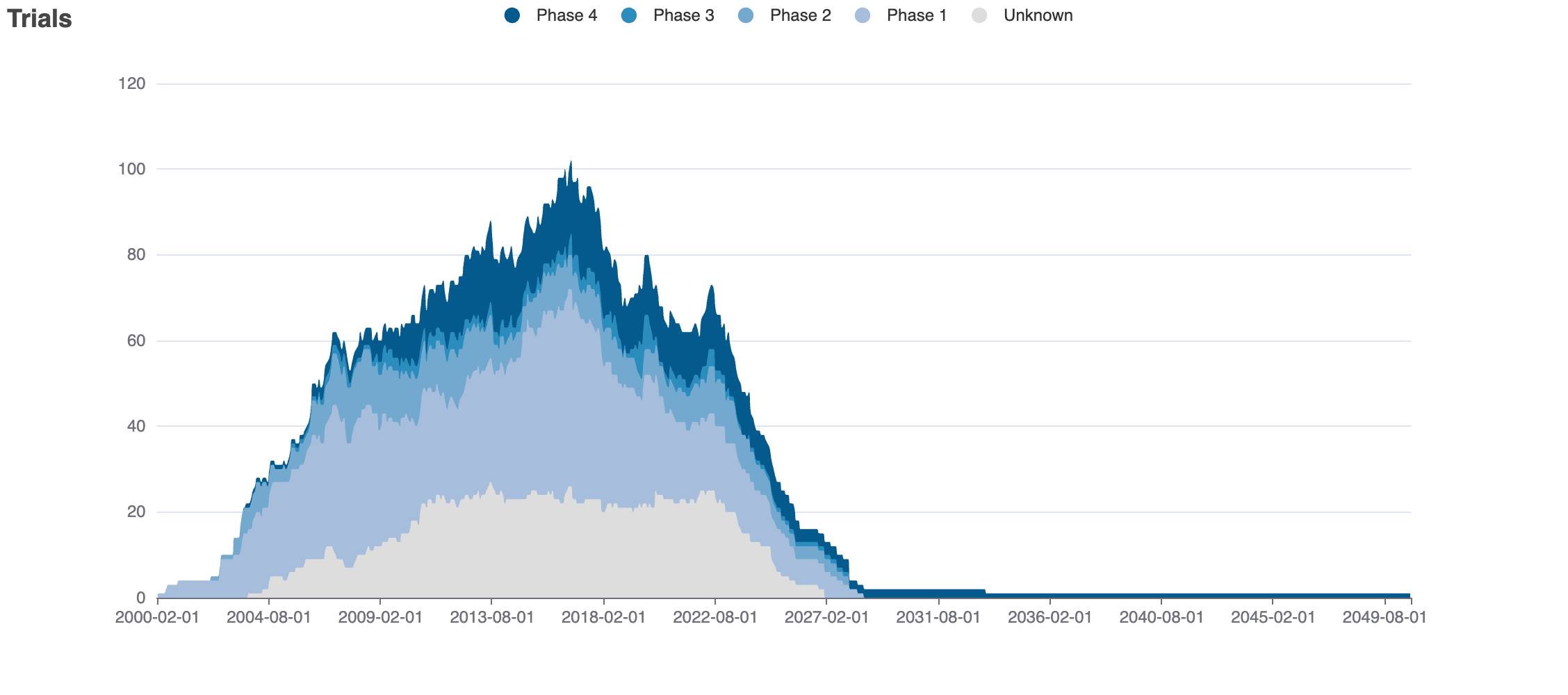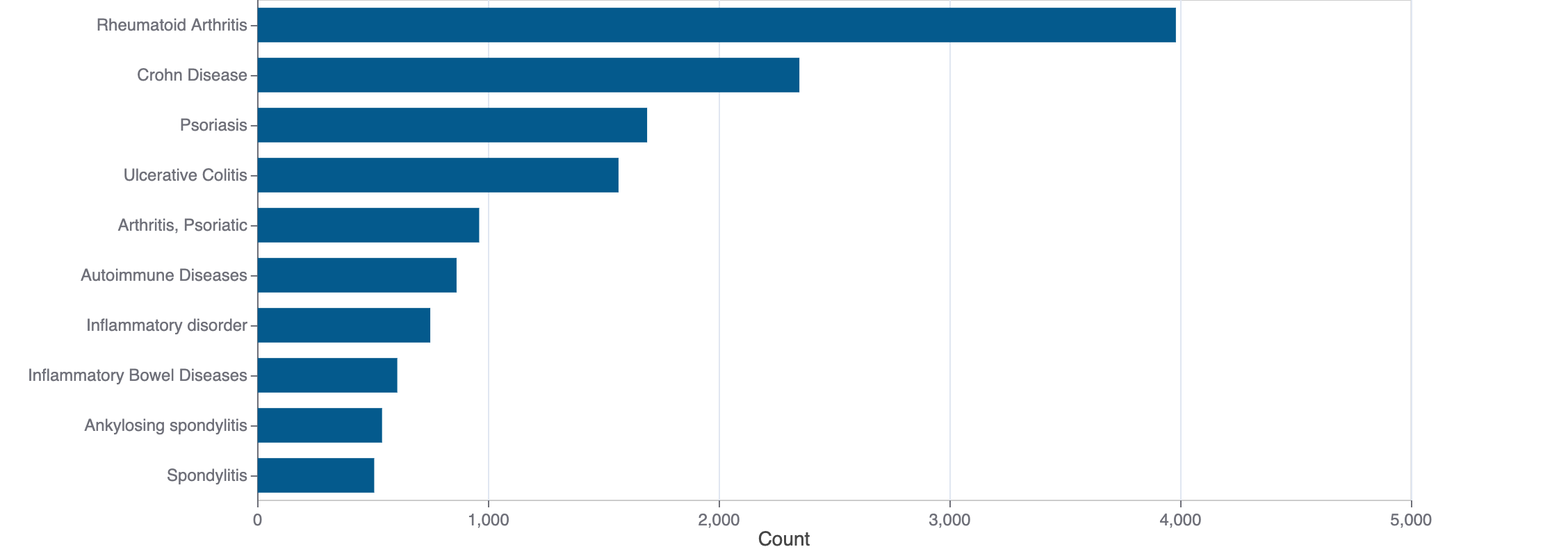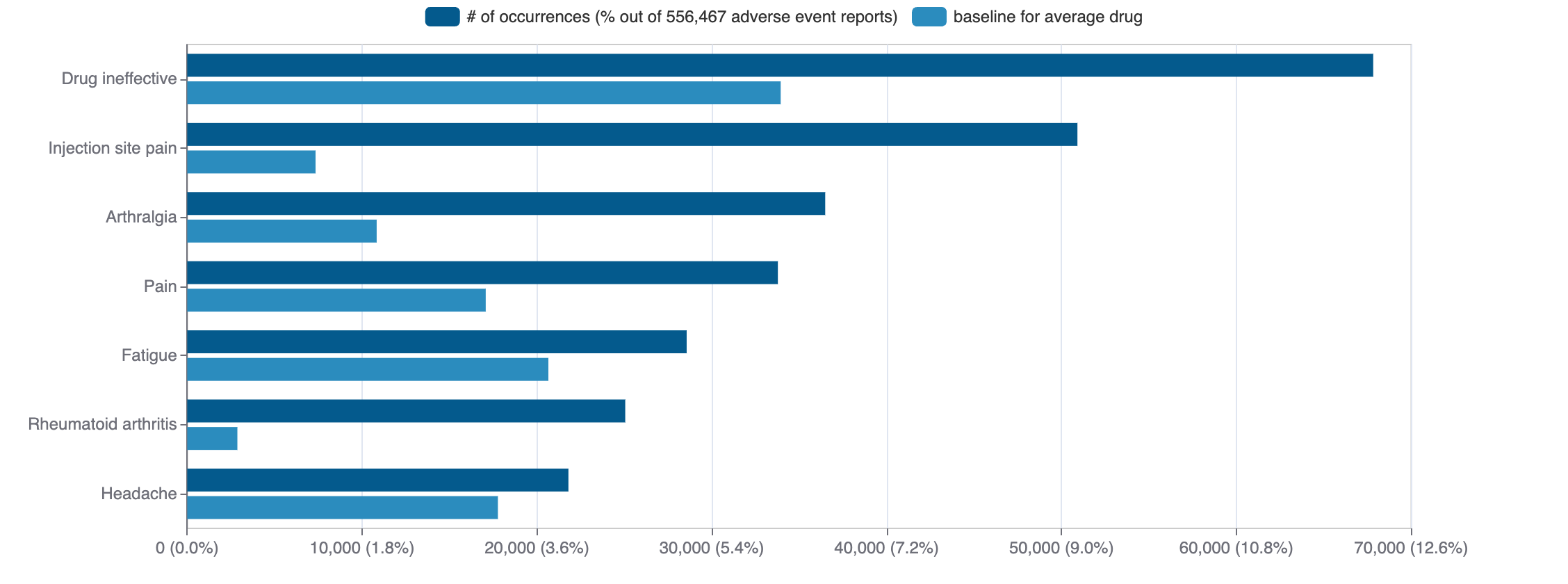Levocetirizine
Xyzal (levocetirizine) is a small molecule pharmaceutical. Levocetirizine was first approved as Xyzal on 2007-05-25. It is used to treat allergic rhinitis perennial, allergic rhinitis seasonal, and urticaria in the USA. The pharmaceutical is active against histamine H1 receptor.
Download report
Favorite
Commercial
Trade Name
FDA
EMA
Xyzal (generic drugs available since 2010-11-26)
Drug Products
FDA
EMA
New Drug Application (NDA)
New Drug Application (NDA)
Abbreviated New Drug Application (ANDA)
Abbreviated New Drug Application (ANDA)
Labels
FDA
EMA
Brand Name | Status | Last Update |
|---|---|---|
| childrens xyzal allergy | New Drug Application | 2021-07-13 |
Indications
FDA
EMA
Indication | Ontology | MeSH | ICD-10 |
|---|---|---|---|
| allergic rhinitis perennial | EFO_1001417 | D012221 | J30.89 |
| allergic rhinitis seasonal | EFO_0003956 | D006255 | J30 |
| urticaria | EFO_0005531 | D014581 | L50 |
Agency Specific
FDA
EMA
No data
Patent Expiration
Patent | Expires | Flag | FDA Information |
|---|---|---|---|
| Levocetirizine Dihydrochloride, Xyzal Allergy 24hr, Chattem Sanofi | |||
| 8633194 | 2027-10-16 | DP | |
HCPCS
No data
Clinical
Clinical Trials
164 clinical trials
View more details

Mock data
Subscribe for the real data
Subscribe for the real data
Indications Phases 4
Indication | MeSH | Ontology | ICD-10 | Ph 1 | Ph 2 | Ph 3 | Ph 4 | Other | Total |
|---|---|---|---|---|---|---|---|---|---|
| Hiv infections | D015658 | EFO_0000764 | B20 | — | 8 | 2 | 1 | 5 | 16 |
| Peripheral arterial disease | D058729 | EFO_0004265 | 2 | — | 1 | 1 | — | 4 | |
| Polycystic ovary syndrome | D011085 | EFO_0000660 | E28.2 | — | — | — | 1 | 2 | 3 |
| Breast neoplasms | D001943 | EFO_0003869 | C50 | — | — | 1 | 2 | — | 3 |
| Muscle weakness | D018908 | HP_0001324 | — | — | — | 1 | 1 | 2 | |
| Poisoning | D011041 | EFO_0008546 | T65.91 | — | 1 | — | 1 | — | 2 |
| Acquired immunodeficiency syndrome | D000163 | EFO_0000765 | B20 | — | 1 | — | 1 | — | 2 |
| Intermittent claudication | D007383 | EFO_0003876 | I73.9 | — | — | 1 | 1 | — | 2 |
| Peripheral vascular diseases | D016491 | EFO_0003875 | I73.9 | — | — | 1 | 1 | — | 2 |
| Sickle cell anemia | D000755 | EFO_0000697 | D57 | — | 1 | — | 1 | — | 2 |
Show 14 more
Indications Phases 3
Indication | MeSH | Ontology | ICD-10 | Ph 1 | Ph 2 | Ph 3 | Ph 4 | Other | Total |
|---|---|---|---|---|---|---|---|---|---|
| Fatigue | D005221 | HP_0012378 | R53.83 | — | 1 | 5 | — | 1 | 6 |
| Heart failure | D006333 | EFO_0003144 | I50 | 1 | 4 | 2 | — | — | 4 |
| Septic shock | D012772 | A48.3 | 2 | 2 | 1 | — | — | 4 | |
| Precursor cell lymphoblastic leukemia-lymphoma | D054198 | C91.0 | 1 | 1 | 1 | — | — | 3 | |
| Type 2 diabetes mellitus | D003924 | EFO_0001360 | E11 | — | 1 | 1 | — | 1 | 3 |
| Neoplasms | D009369 | C80 | — | 1 | 1 | — | 1 | 3 | |
| Ulcerative colitis | D003093 | EFO_0000729 | K51 | — | 1 | 2 | — | — | 3 |
| Beta-thalassemia | D017086 | Orphanet_848 | D56.1 | — | 1 | 1 | — | — | 2 |
| Hyperthyroidism | D006980 | E05.9 | — | — | 1 | — | 1 | 2 | |
| Multiple sclerosis | D009103 | EFO_0003885 | G35 | 1 | — | 1 | — | — | 2 |
Show 26 more
Indications Phases 2
Indication | MeSH | Ontology | ICD-10 | Ph 1 | Ph 2 | Ph 3 | Ph 4 | Other | Total |
|---|---|---|---|---|---|---|---|---|---|
| Chronic kidney failure | D007676 | EFO_0003884 | N18.6 | — | 6 | — | — | — | 6 |
| Insulin resistance | D007333 | EFO_0002614 | — | 1 | — | — | 3 | 4 | |
| Metabolic syndrome | D024821 | EFO_0000195 | E88.81 | — | 1 | — | — | 1 | 2 |
| Covid-19 | D000086382 | U07.1 | — | 1 | — | — | 1 | 2 | |
| Patient compliance | D010349 | — | 1 | — | — | 1 | 2 | ||
| Hyperbilirubinemia | D006932 | — | 1 | — | — | — | 1 | ||
| Prostatic neoplasms | D011471 | C61 | — | 1 | — | — | — | 1 | |
| Keratoconjunctivitis sicca | D007638 | EFO_1000906 | — | 1 | — | — | — | 1 | |
| Sjogren's syndrome | D012859 | EFO_0000699 | M35.0 | — | 1 | — | — | — | 1 |
| Body weight changes | D001836 | — | 1 | — | — | — | 1 |
Show 10 more
Indications Phases 1
Indication | MeSH | Ontology | ICD-10 | Ph 1 | Ph 2 | Ph 3 | Ph 4 | Other | Total |
|---|---|---|---|---|---|---|---|---|---|
| Diet therapy | D004035 | 1 | — | — | — | 1 | 2 | ||
| Healthy volunteers/patients | — | 1 | — | — | — | 1 | 2 | ||
| Malnutrition | D044342 | EFO_0008572 | E40-E46 | 1 | — | — | — | 1 | 2 |
| Chronic pancreatitis | D050500 | EFO_0000342 | K86.1 | 1 | — | — | — | — | 1 |
| Ventricular heart septal defects | D006345 | Q21.0 | 1 | — | — | — | — | 1 | |
| Lung diseases | D008171 | EFO_0003818 | J98.4 | 1 | — | — | — | — | 1 |
| Pulmonary arterial hypertension | D000081029 | 1 | — | — | — | — | 1 | ||
| Familial primary pulmonary hypertension | D065627 | I27.0 | 1 | — | — | — | — | 1 | |
| Respiratory insufficiency | D012131 | HP_0002093 | J96.9 | 1 | — | — | — | — | 1 |
| Alcoholism | D000437 | EFO_0003829 | F10.1 | 1 | — | — | — | — | 1 |
Indications Without Phase
Indication | MeSH | Ontology | ICD-10 | Ph 1 | Ph 2 | Ph 3 | Ph 4 | Other | Total |
|---|---|---|---|---|---|---|---|---|---|
| Glucose intolerance | D018149 | HP_0000833 | R73.03 | — | — | — | — | 3 | 3 |
| Hepatic encephalopathy | D006501 | K72.91 | — | — | — | — | 3 | 3 | |
| Male infertility | D007248 | EFO_0004248 | N46 | — | — | — | — | 2 | 2 |
| Hyperlipidemias | D006949 | EFO_0003774 | E78.5 | — | — | — | — | 2 | 2 |
| Type 1 diabetes mellitus | D003922 | EFO_0001359 | E10 | — | — | — | — | 2 | 2 |
| Chronic renal insufficiency | D051436 | N18 | — | — | — | — | 1 | 1 | |
| Diabetic nephropathies | D003928 | EFO_0000401 | — | — | — | — | 1 | 1 | |
| Musculoskeletal pain | D059352 | — | — | — | — | 1 | 1 | ||
| Liver cirrhosis | D008103 | EFO_0001422 | K74.0 | — | — | — | — | 1 | 1 |
| Autistic disorder | D001321 | EFO_0003758 | F84.0 | — | — | — | — | 1 | 1 |
Show 17 more
Epidemiology
Epidemiological information for investigational and approved indications
View more details
Drug
General
| Drug common name | LEVOCETIRIZINE |
| INN | levocetirizine |
| Description | 2-[2-[4-[(R)-(4-chlorophenyl)-phenylmethyl]-1-piperazinyl]ethoxy]acetic acid is a diarylmethane. |
| Classification | Small molecule |
| Drug class | Second generation antihistamines |
| Image (chem structure or protein) | |
| Structure (InChI/SMILES or Protein Sequence) | O=C(O)COCCN1CCN([C@H](c2ccccc2)c2ccc(Cl)cc2)CC1 |
Identifiers
| PDB | 5DQF |
| CAS-ID | 130018-77-8 |
| RxCUI | 356887 |
| ChEMBL ID | CHEMBL1201191 |
| ChEBI ID | — |
| PubChem CID | 1549000 |
| DrugBank | DB06282 |
| UNII ID | 6U5EA9RT2O (ChemIDplus, GSRS) |
Target
Variants
Clinical Variant
No data
Financial
No data
Trends
PubMed Central
Top Terms for Disease or Syndrome:

Mock data
Subscribe for the real data
Subscribe for the real data
Additional graphs summarizing 1,323 documents
View more details
Safety
Black-box Warning
No Black-box warning
Adverse Events
Top Adverse Reactions

Mock data
Subscribe for the real data
Subscribe for the real data
338 adverse events reported
View more details
Premium feature
Learn more about premium features at pharmakb.com
Learn more
